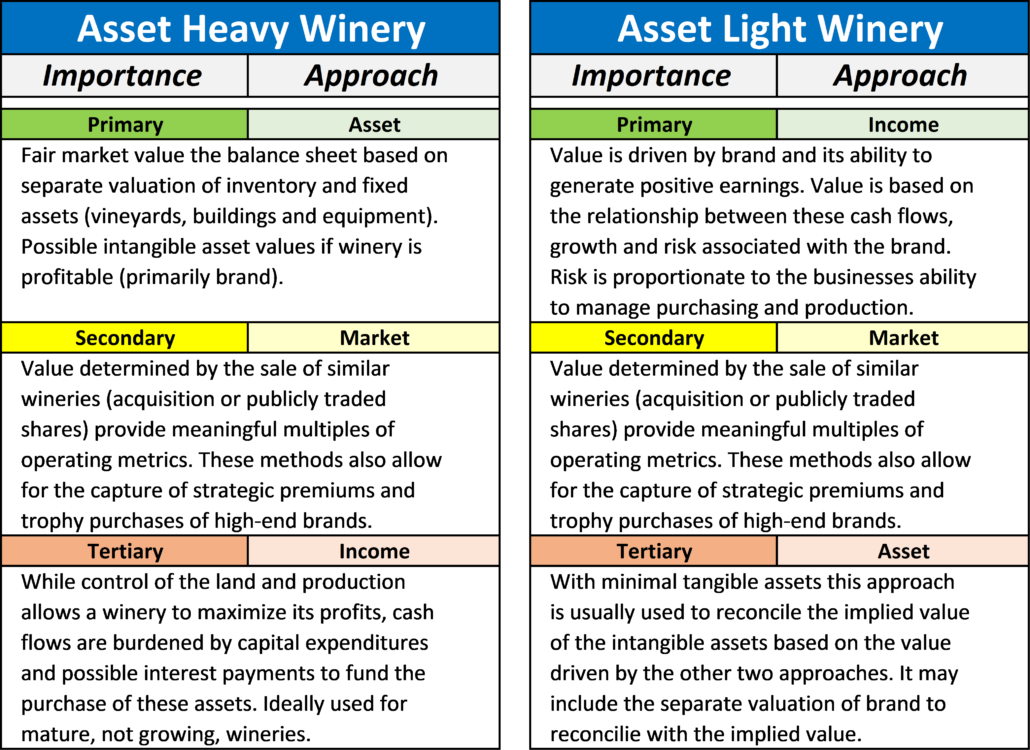Winery Valuation 101
 It was either Churchill or Napoleon who said that “in victory you deserve champagne, in defeat you need it.” In a post-COVID world, consumers certainly haven’t admitted defeat but they’ve taken to wine to deal with the “next” normal. Case in point; wine sales (along with beer, hard seltzer and distilled spirits) are up…big. Whether you are a producer making an Estate Pinot Noir from grapes on your Russian River vineyard or a consumer searching for a reasonably priced bottle of Pinot Noir for Taco Tuesday, here are a few thoughts to ponder on what drives the value of a winery.
It was either Churchill or Napoleon who said that “in victory you deserve champagne, in defeat you need it.” In a post-COVID world, consumers certainly haven’t admitted defeat but they’ve taken to wine to deal with the “next” normal. Case in point; wine sales (along with beer, hard seltzer and distilled spirits) are up…big. Whether you are a producer making an Estate Pinot Noir from grapes on your Russian River vineyard or a consumer searching for a reasonably priced bottle of Pinot Noir for Taco Tuesday, here are a few thoughts to ponder on what drives the value of a winery.
Different Valuation Approaches
In the world of business valuation, there are three fundamental approaches to determine value; Asset, Income and Market. While most of our valuations triangulate around the results of our analysis using each approach, some approaches map better to different types of wineries. Before we look at the differences, here is some background on each valuation approach;
- Asset – based on the fair market value (adjusted from book value) of a company’s underlying assets and liabilities.
- Income – based on present value of the expected future benefit stream (cash flow) adjusted for risk.
- Market – based on a principle of substitution where value is based on a multiple of an operating metric (earnings) derived from the publicly available value of companies with similar characteristics.
Different Types of Wineries
These three approaches have multiple methods of calculation but that discussion is for another day. In this discussion we want to highlight some simple differences that lend themselves to each approach.
- Asset Heavy Winery – An asset heavy winery owns significant assets in the form of vineyards, production and storage facilities, and equipment. It is commonly self-contained location that grows most, if not all, of the grapes used to make the wine. Production is usually on-site and they hold and age significant inventory in bottles and barrels in on-site storage facilities. If they are profitable, they hold significant value in assets not on the balance sheet in the form of brand, wine club list and AVA (American Viticultural Area or grape growing region) designation.
- Asset Light Winery – Sometimes referred to as a négociant or virtual winery these businesses focus on brand with little to no production facilities. They leverage the assets of other wineries and dedicated production facilities (crush pads) to buy grapes, juice or unfinished wine to produce their own branded wines.
Valuation Decisions
Based on the simple review of a Company’s balance sheet, a winery will fall into one of the above two categories, each of which correlate to the use of one of the three valuation approaches.
Below is a matrix of how these approaches relate to each winery type:

Takeaways
This understanding of methodologies and winery types is a strong starting point for a discussion of value either over a glass of wine at a socially distanced dinner party or at the annual board meeting to answer the question; “so what are we worth?” Regardless of the venue, this “101” should make for a great conversation starter. If you are one of the two winery types and want us to help you answer the question of the value of your business, give us a call and let’s talk through your situation and possible next steps.
Exit Strategies values control and minority ownership interests of private businesses for tax, financial reporting, strategic purposes and has valued dozens of wineries over the past few years. If you’d like help in this regard or have any related questions, you can reach Joe Orlando, ASA at 503-925-5510 or jorlando@exitstrategiesgroup.com.





